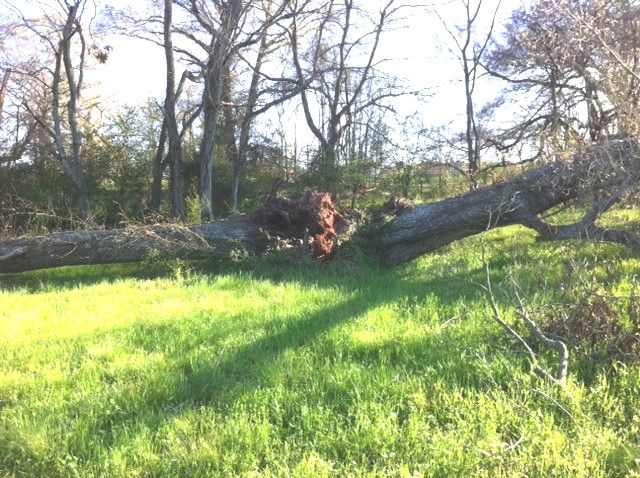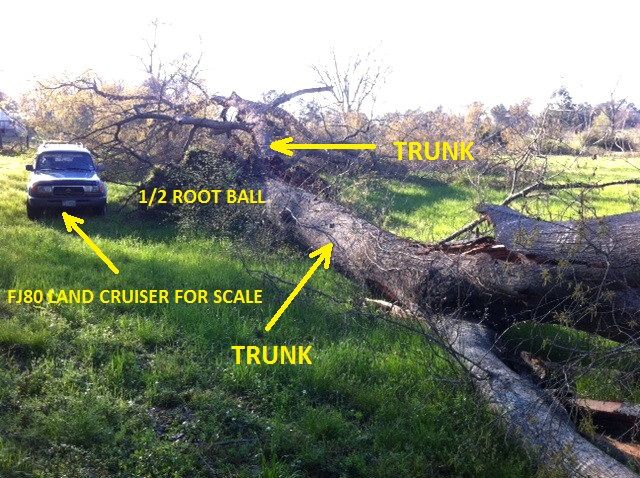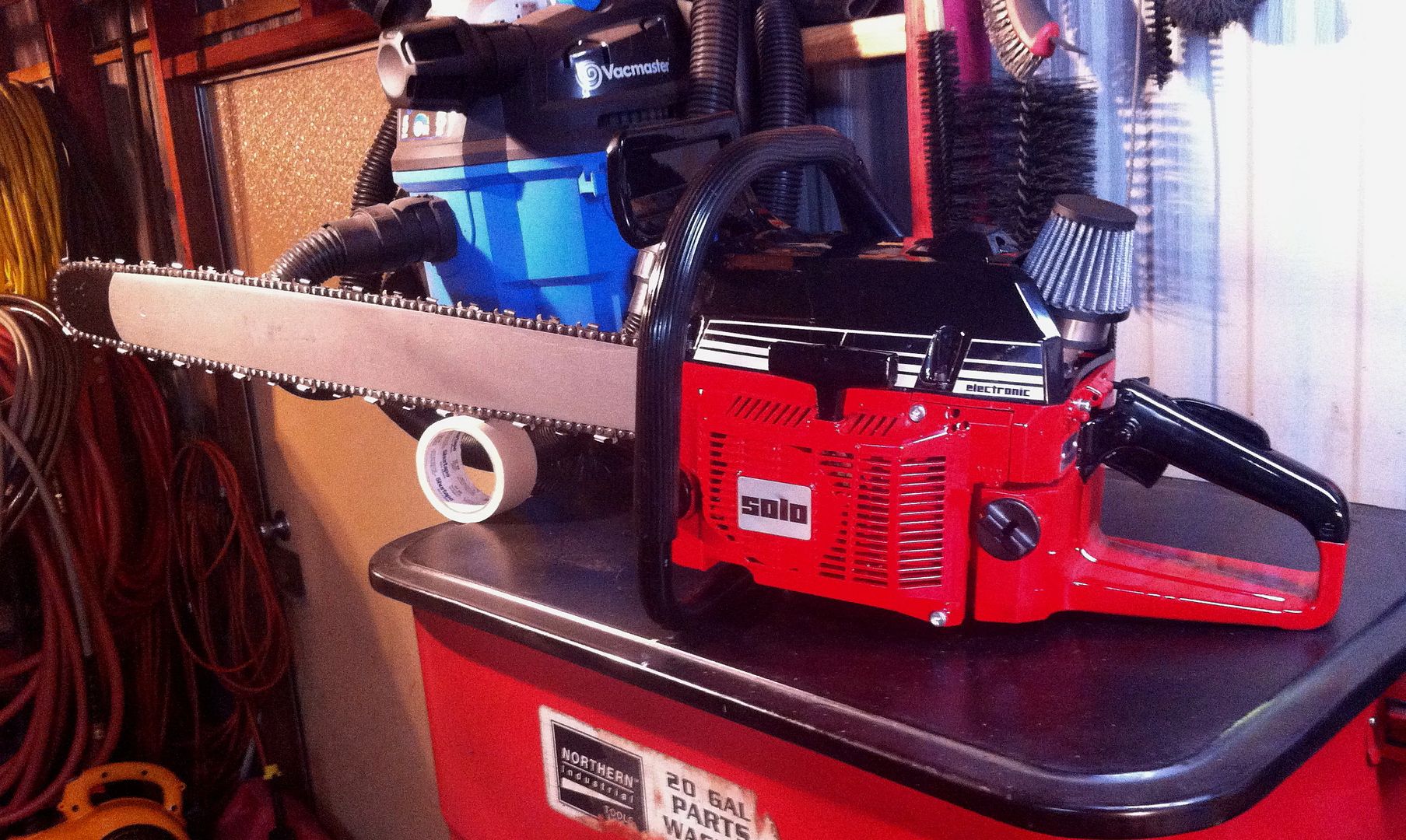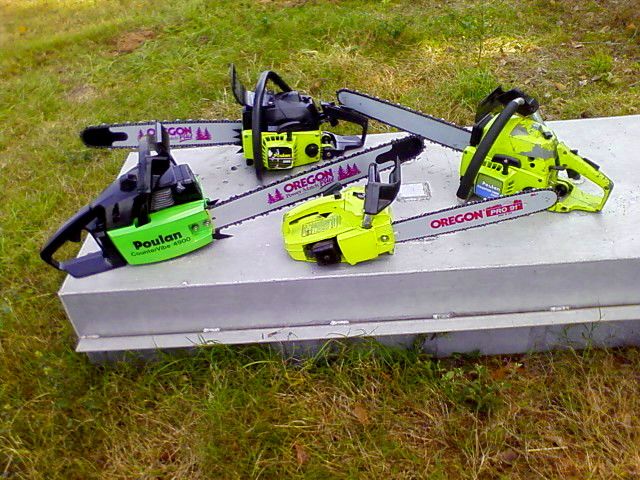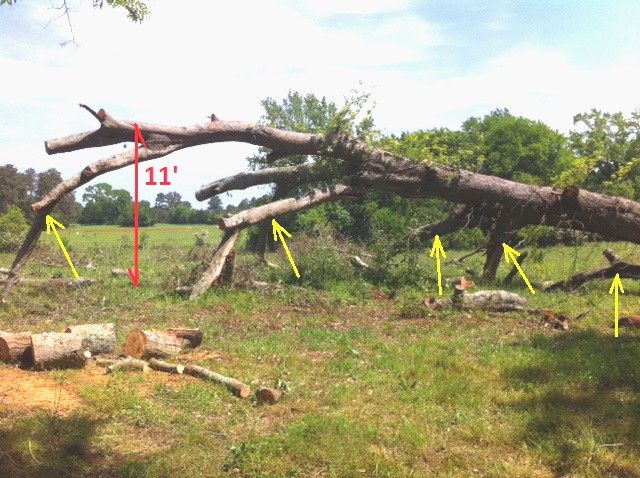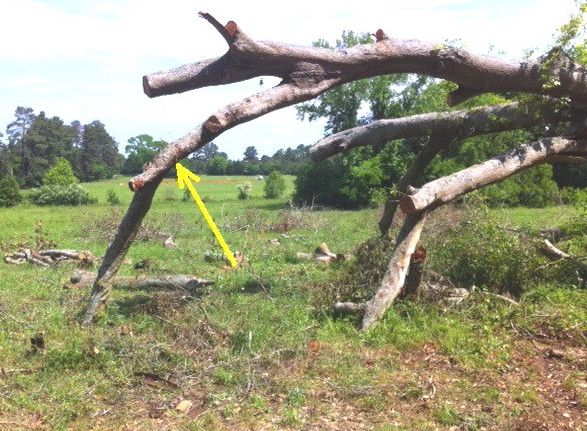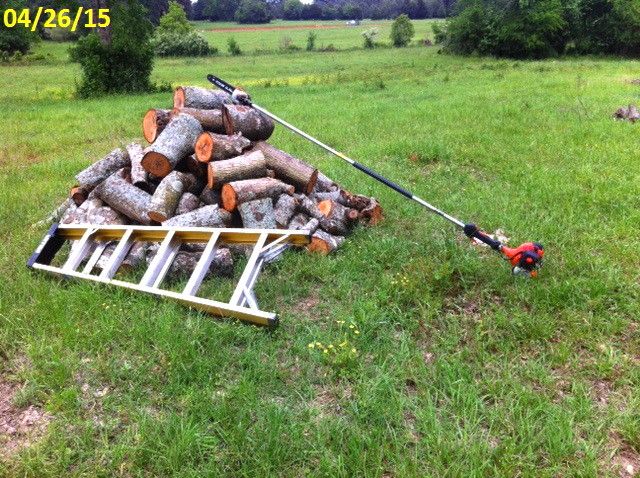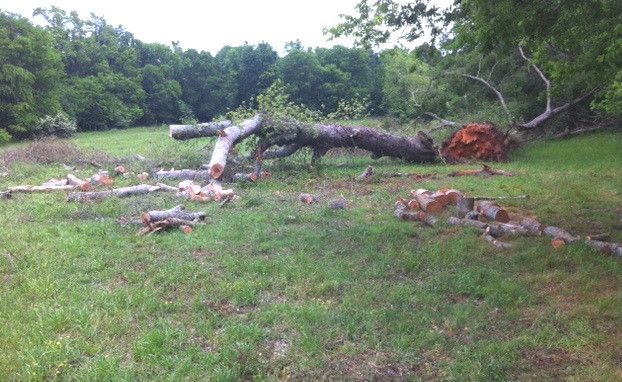Flintknapper
ArboristSite Operative
Extremely wet weather here lately, LOTS of rain has saturated the ground. A large (double) Water Oak in my pasture toppled over and now I have two rather large root balls to deal with. The trunks fell exactly opposite one another (180° apart). One fell slightly uphill, the other slightly downhill.
Both have a lot of upward growing branches that are now stuck in the ground, so the main trunk(s) are off the ground at both ends. I've dealt with this before...but not a tree as large as this one (approximately 44" in diameter...above the swell).
Normally, I would start at the top and work my way back toward the root ball, but there are a lot of big limbs under a lot of tension on both trees. On the other hand...if I attempt to cut away the root ball(s) first, I'll have to deal with the compression (try to avoid getting my saw pinched) and IF that doesn't happen...watch for the root balls to stand back up (they are still pretty much in the hole).
I am fairly certain the trunks are solid (haven't bored into one yet), but many of the Oaks around here (that size) have some amount of hollowness or are 'dody', which could also present a problem. Kind of hate to wade into the tops and risk 'multiple' limbs under pressure...VS. the root ball possibilities, but maybe you Pro's can offer your best advice and/or techniques.
I'm experienced with saws....but certainly no 'Pro'. My inclination is to support under the trunks (6'-8 from the root ball) so the trunk can't fall (far), come up from the bottom about 1/3 rd, bore through...then down to make an undercut. Then move to the top. Get some wedges in there as soon as I can. Go slow and watch for movement. Danger there...is that root ball might stand back up, trunk might roll some, compression might pinch my saw, then I'd be faced with cutting it out with a somewhat smaller saw.
The only equipment I have...is a small 50 HP 4WD tractor...so not much help there.
Sheeeesh, after writing and reading that....maybe going REALLY slow and topping it first....is the better choice. What say you guys?
Yeah, I know...you're going want pics.
Thanks, Flint.
Both have a lot of upward growing branches that are now stuck in the ground, so the main trunk(s) are off the ground at both ends. I've dealt with this before...but not a tree as large as this one (approximately 44" in diameter...above the swell).
Normally, I would start at the top and work my way back toward the root ball, but there are a lot of big limbs under a lot of tension on both trees. On the other hand...if I attempt to cut away the root ball(s) first, I'll have to deal with the compression (try to avoid getting my saw pinched) and IF that doesn't happen...watch for the root balls to stand back up (they are still pretty much in the hole).
I am fairly certain the trunks are solid (haven't bored into one yet), but many of the Oaks around here (that size) have some amount of hollowness or are 'dody', which could also present a problem. Kind of hate to wade into the tops and risk 'multiple' limbs under pressure...VS. the root ball possibilities, but maybe you Pro's can offer your best advice and/or techniques.
I'm experienced with saws....but certainly no 'Pro'. My inclination is to support under the trunks (6'-8 from the root ball) so the trunk can't fall (far), come up from the bottom about 1/3 rd, bore through...then down to make an undercut. Then move to the top. Get some wedges in there as soon as I can. Go slow and watch for movement. Danger there...is that root ball might stand back up, trunk might roll some, compression might pinch my saw, then I'd be faced with cutting it out with a somewhat smaller saw.
The only equipment I have...is a small 50 HP 4WD tractor...so not much help there.
Sheeeesh, after writing and reading that....maybe going REALLY slow and topping it first....is the better choice. What say you guys?
Yeah, I know...you're going want pics.
Thanks, Flint.





